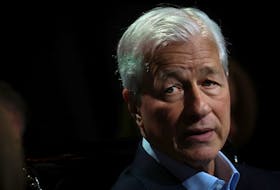Newfoundland and Labrador Hydro representatives have repeatedly said the utility, under direction from the provincial government, is working to identify viable alternatives for power, as residents in these communities and their political representatives have complained systems are expensive, dirty, and restricting economic development, reaching their limits in capacity.
The detailed information capable of assuring people power alternatives are being seriously examined remains within the halls of Hydro Place in St. John’s.
In the back and forth on its latest capital budget application to the Public Utilities Board (PUB), Hydro states plans to upgrade some Labrador diesel power plants. Because of this, the utility was challenged by the PUB about promises made on Labrador power.
In a request for more information, the PUB noted the utility said over a year ago it was expecting to have a study available on the long-term power options for Labrador South. Hydro committed “to carry out the recommended long-term supply alternative.” The report would be available as early as the first quarter of 2013.
The PUB has now asked Hydro to produce that report.
“The requested report has not been finalized,” Hydro stated in response.
The utility’s reply went on to say it was looking at diesel options for Labrador, but has since had additional studies looking at alternatives that need to be factored in.
And the documentation on those studies?
“These reports are being finalized and therefore are not yet released,” Hydro stated.
The document that would lay out a long-term plan for Labrador power now has no expected delivery date, but Hydro has promised an update on where things stand by the end of the year.
Long-term study
In December 2009, Hydro released a “Preliminary Assessment of Alternative Energy Potential in Coastal Labrador,” a report painting existing wind and particularly solar power options as too costly for the Labrador coast.
The provincial government also fed multiple studies into the first phase of its “Energy Innovation Roadmap” — to “identify potential opportunities for further development, expansion and diversification” in the provincial energy sector. A start on Phase 2 of that project was contracted out in May 2012, at a cost of $158,000. A report from that work has yet to be publicly produced.
Meanwhile, Nalcor Energy has continued its wind-diesel research project in Ramea, apparently proving the challenges of using wind power in an isolated power system.
All the while, residents in Labrador wait for their power plan, as they face increases in their power rate hikes with Hydro’s general rate application.
That application will be reviewed by the PUB in a process separate from the annual capital budget review.
Solution remains elusive
In July, as Hydro filed its latest general rate application with the PUB, Hydro lead Rob Henderson was asked about plans for Labrador power.
“In Labrador, there’s been quite a bit of economic activity in recent years and as a result Hydro has been making investments in recent years into the system in Labrador to maintain reliable electricity supply to the customers, while trying to balance that to keep costs down,” he said.
He listed upgrades and new infrastructure amounting to a cost of about $39 million in the region since 2007.
He also said the utility has invested in coastal diesel plants, and diesel remains the least-cost option for coastal customers, despite the ongoing study of alternatives for the isolated systems by Hydro.
“As far as the options are for the coast of Labrador, we will be continuing to study that,” he said.

![['The NL\u2008Hydro plant in Rigolet, Labrador. — Telegram file photo']](https://saltwire.imgix.net/power-options-2466977.jpg?cs=srgb&fit=crop&h=568&w=847&dpr=1&auto=compress%2Cenhance%2Cformat)







